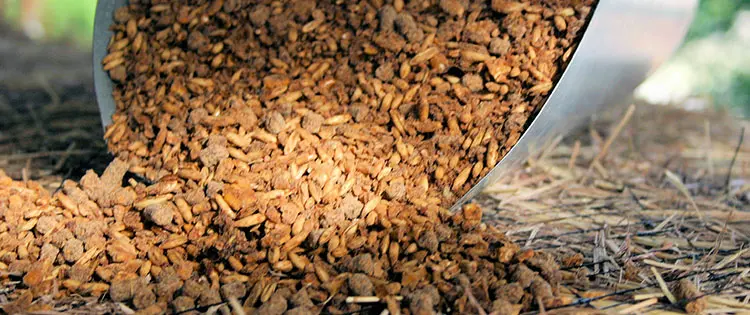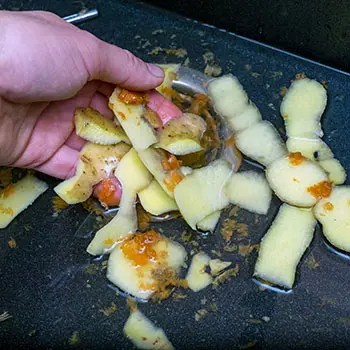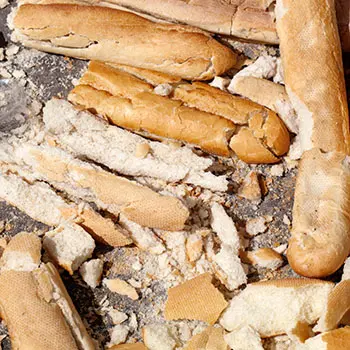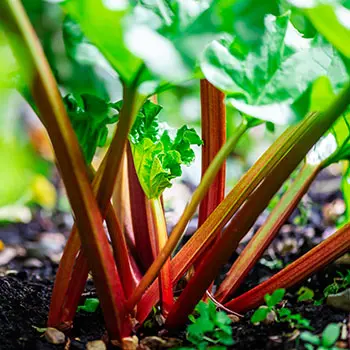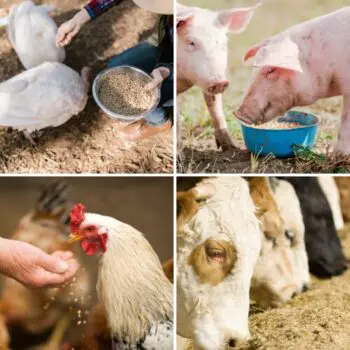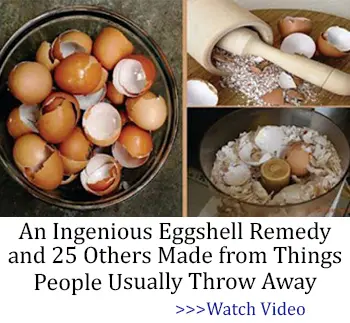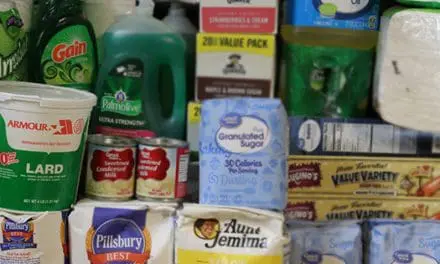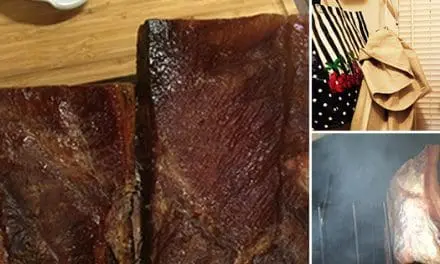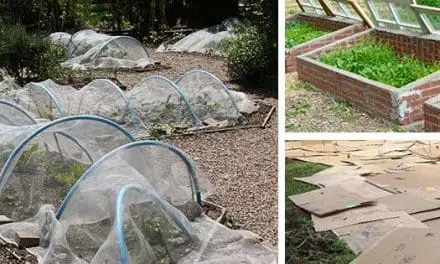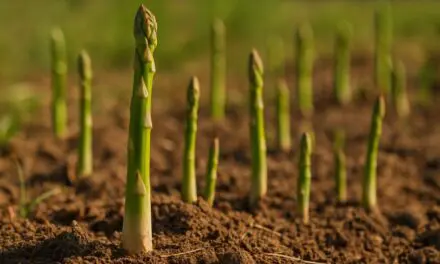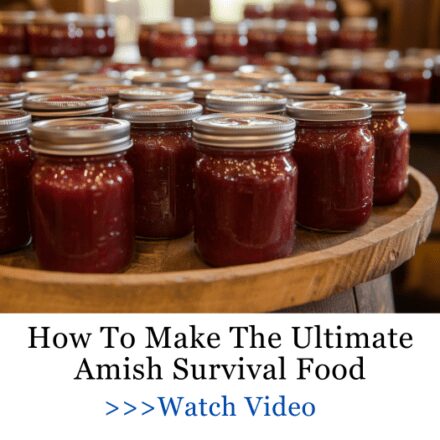The sound of my prize cow struggling to breathe at 3 AM still haunts me. One simple feeding error – wild cherry leaves in her hay – nearly cost me my best milker and years of careful breeding. Whatever you do, never feed this to your livestock.
That night changed how I approach livestock feeding forever. The consequences of feeding improper foods to livestock can be swift and severe.
So don’t learn this the hard way.
Avocados
All parts of the avocado plant, including the leaves, bark, skin, and pit, contain a toxin called persin. This toxin causes severe reactions in livestock, depending on the species. Goats and sheep are particularly vulnerable to heart failure, especially with high exposure.
Birds experience respiratory distress, which can sometimes lead to suffocation. Lactating animals suffer from severe mastitis, which affects milk production and causes pain.
Even small amounts can be fatal, so avocados are on my farm’s “never feed” list.
Onions and Garlic 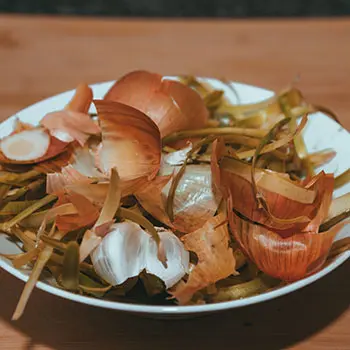
Over time, I’ve learned more about allium toxicity, especially after a few close calls. Onions and garlic contain compounds that damage red blood cells. This causes severe health problems in livestock.
The destruction of red blood cells reduces oxygen transport throughout the body. Animals may develop severe anemia, making them weak and vulnerable to infection.
Respiratory distress can happen due to low oxygen in the bloodstream. In extreme cases, large consumption or prolonged exposure can lead to death.
Related: Never Buy Garlic Again!
Chocolate
Chocolate is one of those foods that can be dangerous for livestock. Every Halloween, I remind my neighbors to secure leftover candy or chocolate wrappers. This helps prevent animals from getting into them by accident.
The theobromine and caffeine in chocolate can cause severe reactions. It can upset the stomach, leading to vomiting and diarrhea. Neurological symptoms like tremors, hyperactivity, and seizures may also occur. Additionally, rapid heart rates or arrhythmias can develop, potentially leading to cardiac arrest.
Chocolate toxicity is especially dangerous for goats and cattle. They may accidentally eat it if it’s within reach.
To protect your livestock, make sure to have strict waste disposal policies in place.
Potatoes (Green or Raw) 
Green potatoes and potato plants contain solanine, a toxin that can poison animals. Green or sprouting potatoes, along with the green parts of the plant, are especially harmful. They can cause severe digestive distress, like bloating and abdominal pain.
Neurological symptoms may also occur, such as confusion, weakness, and lack of coordination. In severe cases, respiratory issues can develop, leading to breathing difficulties.
Related: How To Grow An Endless Supply Of Potatoes
Moldy or Spoiled Feed
Moldy or spoiled feed contains mycotoxins, toxic compounds produced by fungi. These toxins can cause digestive upset, including bloating, diarrhea, and colic. Additionally, neurological symptoms like tremors and seizures may occur. Liver and kidney damage can also happen, leading to chronic health problems.
Even if the feed smells “a little off,” don’t risk it. Check feed storage areas regularly. Never offer spoiled feed to your animals. It’s simply not worth the gamble.
Bread and Bakery Products 
It’s tempting to toss stale bread to your animals, especially when neighbors offer leftovers. But bread and baked goods can cause serious digestive issues in livestock. Excessive bloating can occur, especially in ruminants like cattle, goats, and sheep, due to rapid fermentation in the rumen.
These foods are low in the fiber livestock need and high in carbs they don’t. Nutritional imbalances happen. Choking risks are common, particularly with hardened bread or large, doughy pieces.
I’ve learned to politely decline donated baked goods. Better safe than sorry when it comes to your herd’s health.
Related: How To Make Bread Last For Up To 5 Years
Citrus Fruits
It might surprise you, but citrus fruits like oranges, lemons, and grapefruits are not livestock-friendly. While they may seem like a fun treat, they can disrupt your animals’ digestion.
The high acidity in citrus fruits causes stomach irritation, which can lead to ulcers or colic.
It also interferes with rumen fermentation, throwing off the animal’s natural digestive balance. In lactating animals, it can result in reduced milk production.
On my homestead, citrus scraps go straight to the compost bin, far away from the feeding trough.
Rhubarb 
Rhubarb leaves contain oxalic acid, making this common garden plant dangerous to livestock. Oxalic acid binds to calcium in the bloodstream, forming crystals that can damage the kidneys. Even a small amount of rhubarb can cause serious health issues. It can lead to kidney damage, which may result in kidney failure if untreated. Additionally, animals may experience gastrointestinal symptoms like diarrhea and cramping.
These issues can cause discomfort and lead to dehydration. Moreover, rhubarb can reduce appetite and cause weakness, which is especially concerning for working or pregnant animals that need extra strength and nourishment.
To prevent this, maintain a livestock-safe compost pile to keep rhubarb and other toxic plants out of reach. Even moderate quantities can be fatal. Since rhubarb is particularly tempting due to its large, vibrant leaves, I keep it fenced off in my garden and monitor it closely.
Why Livestock Shouldn’t Eat Certain Foods
Each species on my farm has unique digestive traits and tolerances. Understanding these differences has helped me observe, document, and prevent toxic reactions. For ruminants like cattle, sheep, and goats, their digestive systems are sensitive to abrupt dietary changes. This can lead to bloat, acidosis, or other fatal conditions.
Pigs are surprisingly sensitive to certain fungi and molds. They are at risk of mycotoxin poisoning, which can affect their growth and immune health.
Poultry is particularly vulnerable to toxins in green potatoes. They also struggle with certain fruits and seeds, such as avocado and apple seeds, due to their high concentration of persin and cyanogenic glycosides.
Best Practices for Feeding Livestock Safely 
Understand your livestock’s nutritional needs. Fine-tune feeding programs for each species based on their sensitivities. My approach includes seasonal feed adjustments to ensure optimal nutrition year-round.
I also create age-specific nutrition plans. These support the growth of young animals and help maintain older ones. Additionally, I adjust diets for lactating animals, breeding stock, and working animals based on their production stage.
Safe Disposal Practices
Another essential aspect of keeping my livestock healthy is ensuring the safe disposal of any potentially harmful foods. On our homestead, we’ve adopted strict disposal practices to prevent accidental ingestion by our livestock. We use separate waste bins for food scraps that aren’t safe for animals.
This helps us easily distinguish between what’s safe and what’s dangerous. We also empty our compost bins regularly to prevent animals from accessing discarded kitchen waste, especially things like onion peels, chocolate wrappers, and potato skins. Additionally, we’ve set up dedicated compost areas for safe materials like non-toxic vegetable waste and leaves, which we can repurpose as compost to enrich our soil.
By maintaining strict controls around food disposal, we reduce the likelihood of livestock encountering toxic substances.
Keeping Livestock-Areas Secure
It’s important to protect livestock enclosures from both intentional and accidental exposure to harmful foods.
Secured fences around pastures and feeding areas help prevent animals from wandering into gardens or food storage zones.
Adding warning signs is also helpful. They inform family members and fellow homesteaders about food dangers, discouraging them from tossing food scraps. These steps are crucial in reducing the risk of accidental ingestion by curious animals.
Every animal depends on your knowledge and vigilance. I’ve seen how small feeding mistakes can lead to tragic results. However, I’ve also seen how proper nutrition can help animals thrive. Never assume that what’s safe for one animal is safe for all.
Which one surprised you the most? Comment down below!
These Animals Are Stealing Your Chicken Eggs
Don’t Let Your Chickens Eat This Plant. Here’s Why (Video)
Livestock In Winter: Mistakes Even The Most Advanced Homesteaders Make

